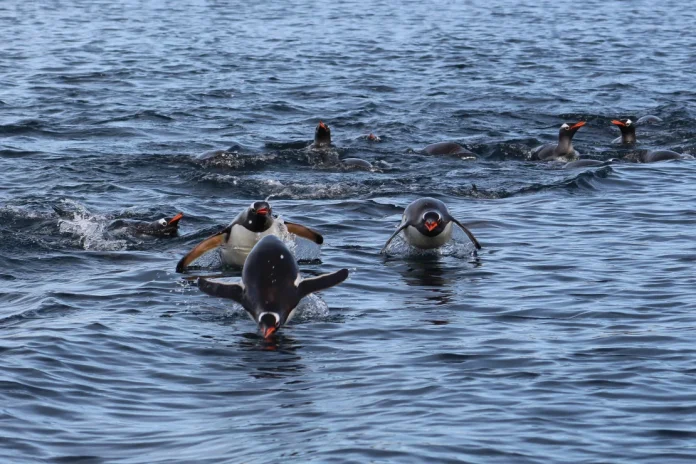In a surprising scene amid the stark isolation of Antarctica, a luxury cruise ship, the Seabourn Pursuit, recently maneuvered directly into a vast sheet of sea ice in Hanusse Bay, positioning itself several hundred yards into the frozen landscape. Onboard, 250 passengers eagerly stepped off the ship to explore the ice, champagne flutes in hand, marking an adventure that was, by design, both opulent and exotic. For these travelers, among them retired Las Vegas police officers Greg and Susana McCurdy, the experience symbolized a growing demand for exploration of the “last continent” in comfort and style. They raised a banner reading “7th Continent Antarctica 2024” to commemorate the journey and joined an expanding list of tourists who have visited every continent.
Antarctic travel, once reserved for scientists and rugged explorers, has surged over the past decade, driven by rising demand for extreme destinations and a tourism industry increasingly catering to affluent travelers. According to the International Association of Antarctica Tour Operators (IAATO), Antarctic tourism has climbed from around 7,000 annual visitors in the 1990s to over 122,000 in the latest season. While a post-pandemic surge in “bucket-list” tourism is part of the story, industry insiders say improvements in travel options and luxury offerings are making Antarctica more accessible than ever.
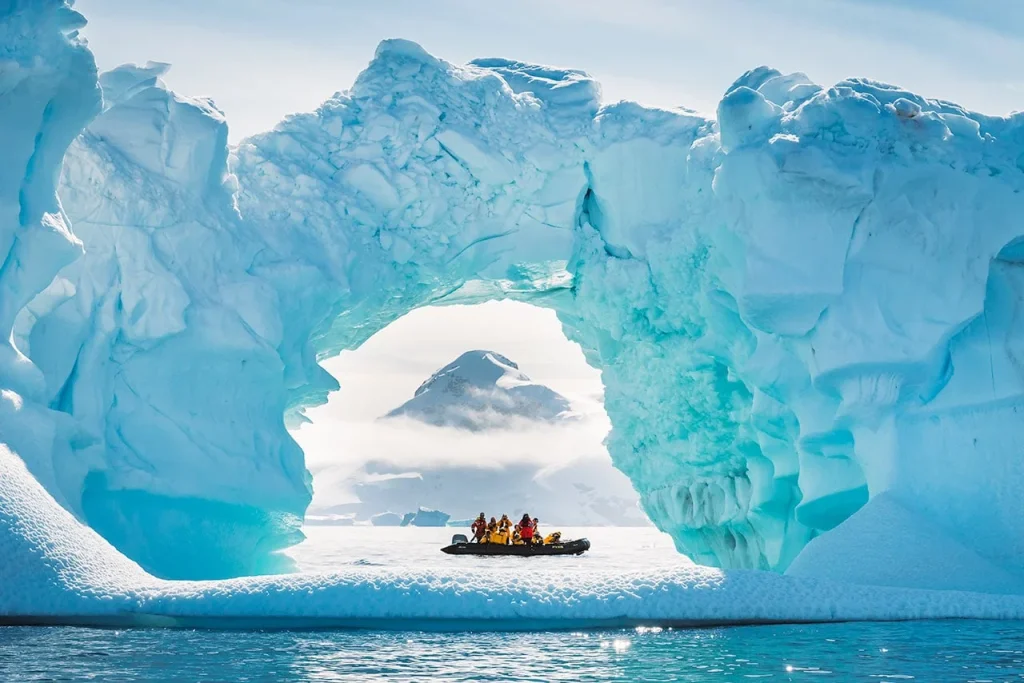
Cruise lines now cater to a wide spectrum of Antarctic travelers. Lines like Lindblad and National Geographic, which pioneered upscale polar tourism, have been joined by luxury operators such as Ponant, Silversea, Seabourn, and Scenic, which provide high-end amenities such as private suites, multiple dining options, and onboard spas. Some cruises even offer submarine tours, guided kayaking, and camping excursions on the ice, while basic “cruise-only” trips allow passengers to see the continent without stepping onto its shores.
Yet the increase in Antarctic tourism has raised significant environmental concerns. Conservationists warn that this uptick in visitors may threaten one of the world’s most pristine ecosystems. In 2022, a Nature study noted that black carbon particles from cruise ships are accelerating ice melt by darkening the surface of the snow, which reduces its reflective properties and leads to more heat absorption. Increased human activity has also been linked to rising carbon dioxide levels in the area, which until recently was one of the least impacted by global pollution.
“This isn’t a regular tourism destination,” said Dr. Sarah Harrison, a researcher on polar environments. “Antarctica is an environmental linchpin, influencing global weather patterns and sea levels. Increased human presence—especially in these volumes—is cause for serious concern.”
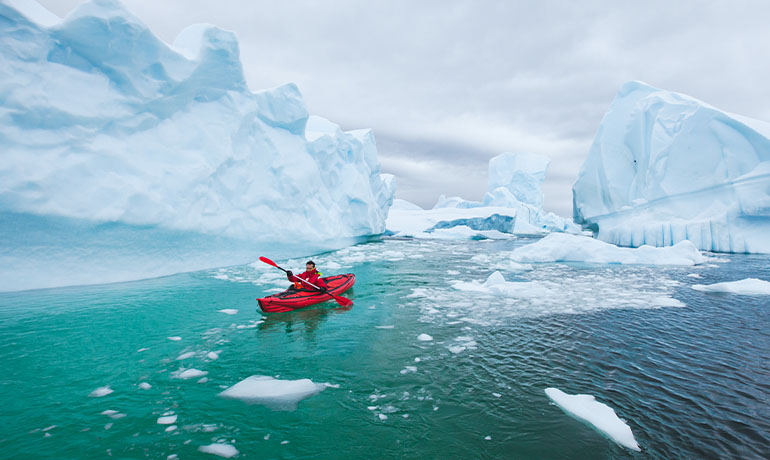
Marchay
For the McCurdys, their Antarctic adventure is part of a broader trend of travelers rethinking traditional vacation plans. The COVID-19 pandemic made people more willing to pursue adventurous destinations, says Susana, who now works part-time as a travel agent. “Clients are looking for authentic, bucket-list items now more than ever. They’re just not waiting anymore, and Antarctica is near the top of everyone’s list.”
The demand for high-end polar experiences is clear: While Antarctic cruises of past decades relied on repurposed ice-breakers with minimal comforts, today’s vessels are purpose-built for luxury. Robin West, Seabourn’s vice president and general manager of expeditions, recalls his first Antarctic journey in 2002 when travelers had to settle for shared bathrooms, bunk beds, and cafeteria-style dining. Today, the Seabourn Pursuit offers private balconies in each cabin, panoramic glass walls, and even a heated deck for passengers to observe floating icebergs and distant penguins in comfort.
Such opulence doesn’t come cheap. High-end voyages to Antarctica can cost upwards of $30,000 per person, yet demand continues to grow, with affluent travelers willing to pay for unique experiences. According to Colleen McDaniel, editor-in-chief of Cruise Critic, lines like Lindblad, National Geographic, and newer luxury operators have opened up the Antarctic experience to more traditional travelers over the past decade. “They’ve brought the experience to the everyday luxury traveler, and the interest just keeps growing,” McDaniel explained.
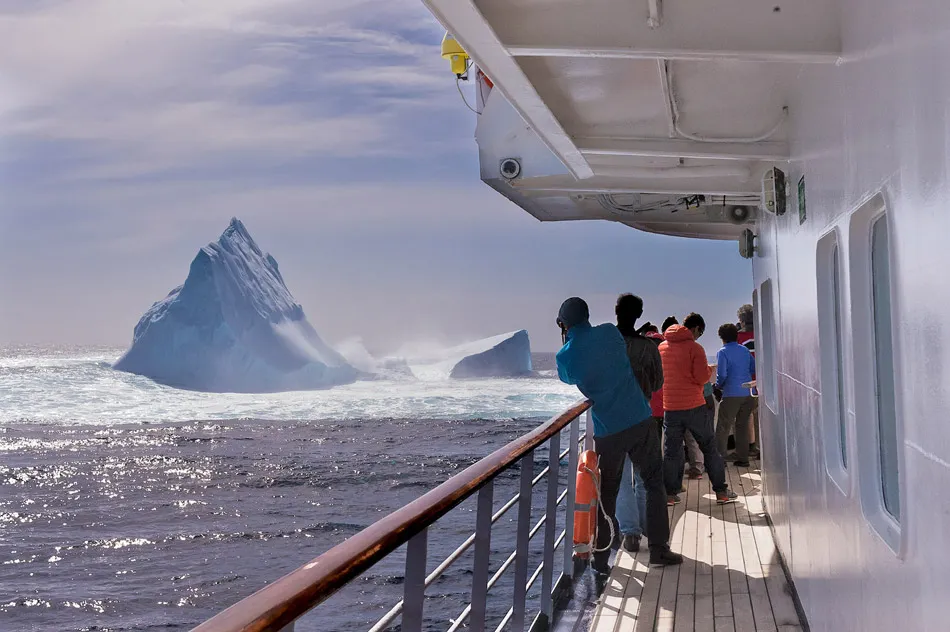
One of the most concerning impacts of rising Antarctic tourism is the potential harm to wildlife. The IAATO, which oversees tourism to the continent, mandates strict guidelines to protect local ecosystems. Tourists are instructed not to bring outside food or contaminants ashore, and are advised to maintain considerable distance from wildlife to avoid introducing pathogens to native species. Additionally, IAATO recently started tracking fuel consumption by cruise ships in the region, encouraging operators to rely on electric propulsion whenever possible to minimize emissions.
Nevertheless, conservationists argue that even with these precautions, rising visitor numbers will have adverse impacts. Antarctica’s delicate ecology is easily disrupted by carbon emissions, soot, and the heat generated by increased human activity.
For cruise operators, minimizing environmental impact is a challenge. Passengers are prohibited from lying in the snow, must avoid bringing any food ashore, and are advised to stay distant from penguins and seals. Tour operators are also barred from constructing any permanent facilities for tourists under the Antarctic Treaty, which aims to keep the region as undisturbed as possible. But with tourists now numbering over 122,000, adhering to these policies is increasingly difficult, and some experts question whether enforcement is adequate.
Alongside ultra-luxury offerings, operators have also introduced “cruise-only” trips, which allow passengers to see Antarctica without landing on its shores. Celebrity Cruises, Princess Cruises, and Norwegian Cruise Line have developed itineraries for larger ships, allowing more affordable access. IAATO reports a massive increase in such “cruise-only” trips: in 2017, around 7,000 visitors traveled to the continent this way, whereas that number soared to over 43,000 this season. “For budget-conscious travelers, this is an alternative way to witness the region’s beauty without disturbing the landscape,” McDaniel said. Still, these larger vessels may produce more emissions and pollution than smaller expedition ships, raising additional environmental questions.
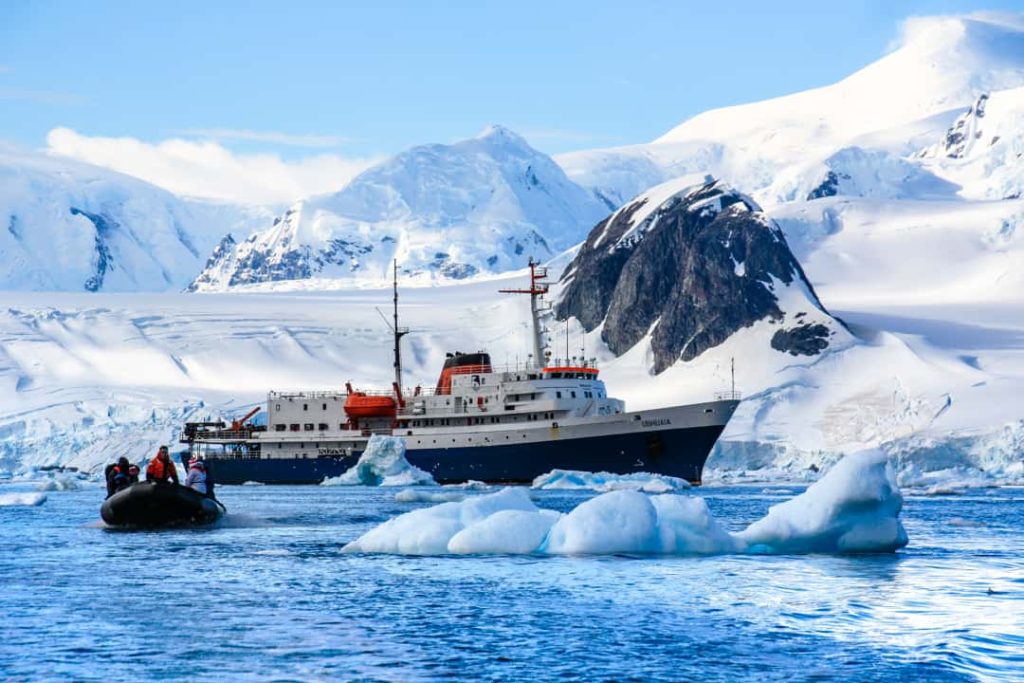
“More than ever, we are challenged to find ways to make tourism in Antarctica sustainable,” said Dr. Harrison. “The Antarctic Treaty is designed to protect the continent, but its enforcement was never meant to handle these kinds of numbers. We must consider whether the current regulatory system can truly safeguard this unique environment from the pressures of mass tourism.”
Meanwhile, cruise lines are betting big on Antarctica, investing billions in vessels designed for both luxury and icy terrain. Seabourn’s Venture, sister ship to the Pursuit, offers amenities more commonly found in luxury hotels than traditional exploration ships. Features include a spa, nine restaurants, and lounges with 360-degree views, offering high-end comfort for those seeking the adventure of a lifetime.
Yet, despite efforts to offer “luxury with responsibility,” some experts argue the environmental impact of expanding tourism could outstrip any mitigation measures. Given Antarctica’s importance in climate regulation, increased carbon output and melting ice due to human activity in the region present risks with global implications.
For travelers like the McCurdys, the Antarctic cruise is a life milestone—a chance to see rare wildlife and a fragile ecosystem. However, with annual visitor numbers climbing past 100,000, questions remain about how much tourism this fragile environment can sustain.
As the tourism boom continues, Antarctica’s fate hangs in the balance. Whether the regulatory efforts of the IAATO and Antarctic Treaty nations can preserve the continent for future generations remains an open question, casting uncertainty over the future of polar travel. The balance between exploration and conservation may be increasingly tested as the “last continent” becomes more accessible to luxury-seeking tourists from across the globe.

